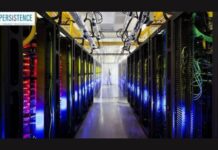Data-Driven Decision Making (DDDM) has become a cornerstone in the manufacturing sector, where analytics plays a pivotal role. This approach involves leveraging data and analytics tools to inform and guide decision-making processes within the industry. In manufacturing, the vast amount of data generated throughout various processes offers valuable insights that can optimize efficiency, reduce costs, and enhance overall performance. By harnessing analytics, manufacturers can make informed decisions based on real-time data, predictive modeling, and historical trends. This data-driven approach not only improves operational processes but also enables better resource allocation and strategic planning. Ultimately, the integration of analytics in the manufacturing sector empowers organizations to adapt to dynamic market conditions and achieve a competitive edge in today’s data-driven landscape.
Commenting on how has technology contributed to the evolution of sustainable manufacturing practices? Dr. Preeti Jha, Associate Professor, Computer Science and Engineering, KLH Bachupally Campus, Hyderabad said, “Data analytics and artificial intelligence are revolutionizing the manufacturing industry by significantly enhancing resource utilization and minimizing environmental impacts. Predictive maintenance, powered by AI algorithms, predicts machinery failures, reducing downtime and extending equipment lifespan. Energy management is optimized through AI, which analyzes consumption patterns to cut down on energy waste. Supply chain operations are streamlined for efficiency, reducing emissions and waste. AI also assists in identifying and reducing production waste, optimizing raw material usage, and improving quality control to minimize rework and scrap. Additionally, these technologies enable real-time monitoring and automation of manufacturing processes, leading to more efficient resource use. AI’s role in developing sustainable materials and enhancing product lifecycle analysis further contributes to reducing the environmental footprint of manufacturing, aligning with the goals of sustainable and efficient production.”
Adding to the same, Kiran Rudrappa, CEO and Co-founder, Posspole mentioned “Technology has been crucial in bringing about the development of sustainable manufacturing practices. The use of innovative technology minimizes environmental pollution, and enhances ethical production within this industry. The quest for a balanced future whose technology will not only be innovative, but also lead us towards sustainable development. Technical innovations provide integration of new manufacturing processes, procedures, and technologies in order to deal with lack of resources world over and relieve environmental pressure. The strategic adoption of such an organizational scheme shows that the organization seeks to produce environmentally friendly products and is part of a broader goal of sustenance. This aspect goes further to ensure that such industrial by-products are effectively removed from the environment using viable, sustainable manufacturing methods. Besides, sustainable product design and manufacture is also one of the factors facing the rapid industrialization. The most pressing issue in this industry is achieving product longevity which in itself makes an important part of today’s economy. There is an increased need for sustainability which is pushed by policy legislation but also through people’s concerns over their carbon footprint. Innovative methods would include eco-friendly techniques in the process of manufacturing products. However, one should remember that sustainability does not simply mean having the right technologies but rather a new way of thinking. The businesses reduce energy consumption, thus contributing to a reduction of CO2 emissions towards a common goal of conserving the environment.”
Further to the discussion around challenges or barriers associated with integrating technology into sustainable manufacturing practices, Dr. Preeti Jha added “Integrating technology into sustainable manufacturing faces challenges such as high initial costs, which can be managed through phased implementations or seeking financial aids like grants. The skills gap is a significant issue, necessitating targeted training and workforce development initiatives. Cybersecurity risks in digitized environments call for stringent security protocols. Integrating new technologies with existing systems requires modular and interoperable solutions. Complex supply chain adjustments demand collaborative and standardized approaches. Overcoming organizational resistance involves effective change management and clear communication of technological benefits. Lastly, staying compliant with evolving environmental regulations requires continuous attention to legal and safety standards. Addressing these challenges effectively is crucial for a successful transition to sustainable manufacturing practices”.
Adding to the same, Kiran Rudrappa “The advancement of technology towards less environmental risk during manufacturing is a significant turning point. Several of these developments, including nanotechnology, cloud computing, 3D printing, and the Internet of Things, have significantly transformed the sector.
Mr. Manish Godha Founder and CEO and Advaiya highlighted, “We have partnered with some of our large manufacturing and power generation clients where we helped them migrate from laborious data collection, aggregation, analysis and reporting on spreadsheets. We implemented consistent and streamlined interfaces for data collection on a periodic basis, often right at the source, and leveraged standardized methodologies to automatically compute overall emissions and other relevant information. We implemented automated processes for data verification, audit and exception tracking, as well as used AI for risk identification. This, augmented with comprehensive and centralized task and issue tracking allowed our clients to focus on exceptions and improvements rather than information processing. This has led to not just efficiencies, but also much faster identification of interventions needed and tracking of efforts and results. Our clients have reported reduction in routine efforts, much better compliance, and most importantly faster accomplishment of ESG goals.”
In conclusion the integration of data analytics and artificial intelligence is ushering in a new era of sustainable manufacturing. By optimizing resource utilization and minimizing environmental footprints, these technologies are not only driving efficiency but also aligning manufacturing practices with global environmental goals. As industries continue to embrace these innovations, we can anticipate a future where technology not only fuels economic growth but also fosters a harmonious relationship between industry and the environment. The journey towards sustainable manufacturing is now guided by the intelligent insights and predictions derived from the vast pool of data at our disposal.















